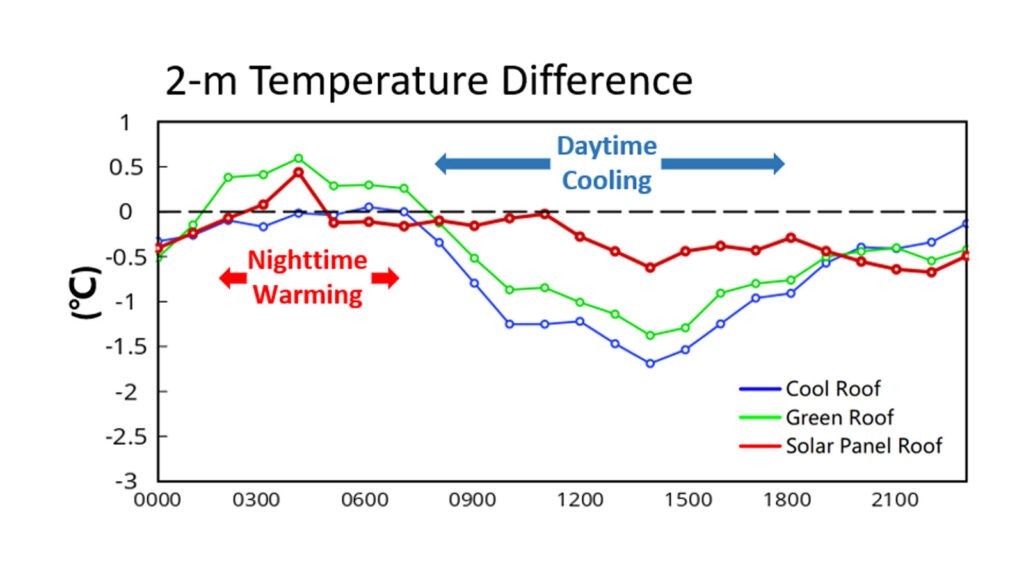As summer temperatures continue to rise, cities like Chicago must educate their decision makers and their communities on strategies to keep their citizens cool. One of these strategies involves something every building already has: a roof, and certain roofing materials help to cool the surrounding outdoor air and reduce the need for air conditioning (AC).

A team of researchers from the United States Department of Energy’s (DOE)-Argonne National Laboratory analyzed the impact of three different roofing strategies and their respective near-surface temperatures and cooling energy demands in the Chicago metropolitan area through regional modeling.
The team ran a climate model simulation of the Chicago metropolitan area and three roof types: cool (painted a heat-reflecting white), green (vegetation) and solar panels.
They discovered that the three different roofs helped bring down the temperature and lessen the need for AC during the hottest part of the day. Cool roofs were able to lower the near-surface temperature by 1.5 degrees Celsius, followed by green roofs at 1.2 degrees and solar panel roofs at 0.6 degrees across Chicago.

Since all the roofing strategies have cooling effects, they help decrease AC usage. Cool roofs have the highest impact on reducing AC energy consumption, followed by green roofs and solar panel roofs. When cool roofs, green roofs, and solar panel roofs are used, energy demand is found to decrease by 16.6%, 14.0%, and 7.6% respectively.
In general, cool roofs seem to be the best option for keeping things cool and saving energy. They’re cheaper than the other choices and you don’t need to use extra water.

Stakeholders can use the study’s findings to figure out better ways to develop sustainably, reduce the amount of energy needed for cooling in the summer, and ultimately decrease greenhouse gas emissions in the long run in the Chicago area.
Reference- Community Research on Climate & Urban Science (CROCUS), Argonne National Laboratory, The New York Times, Clean Technica






